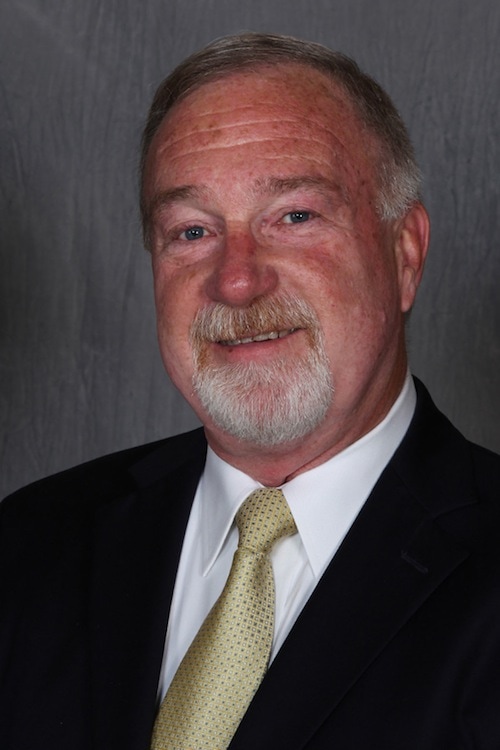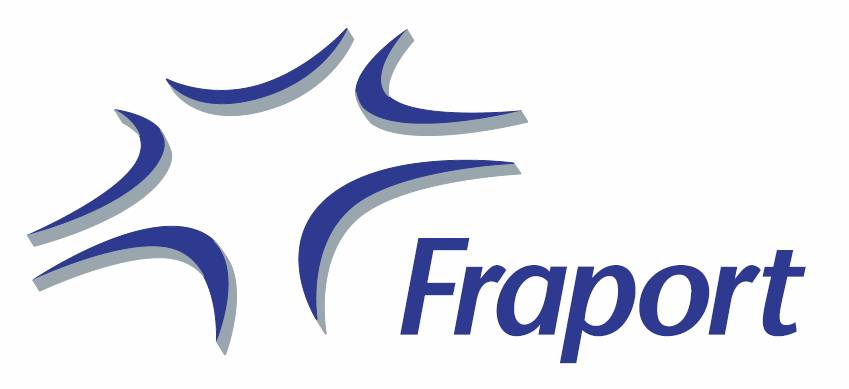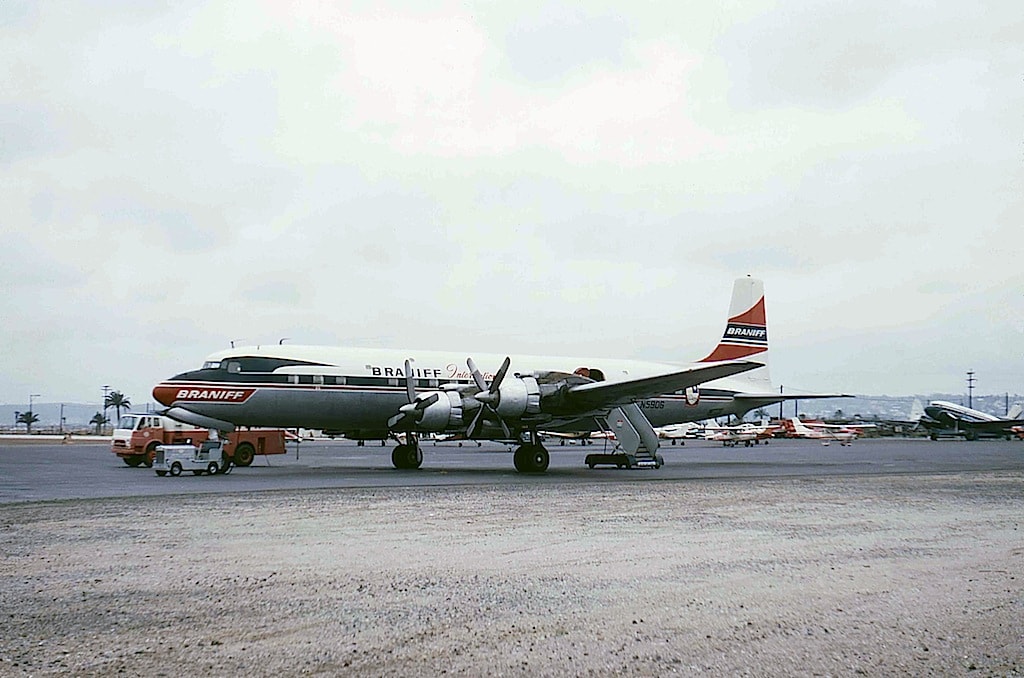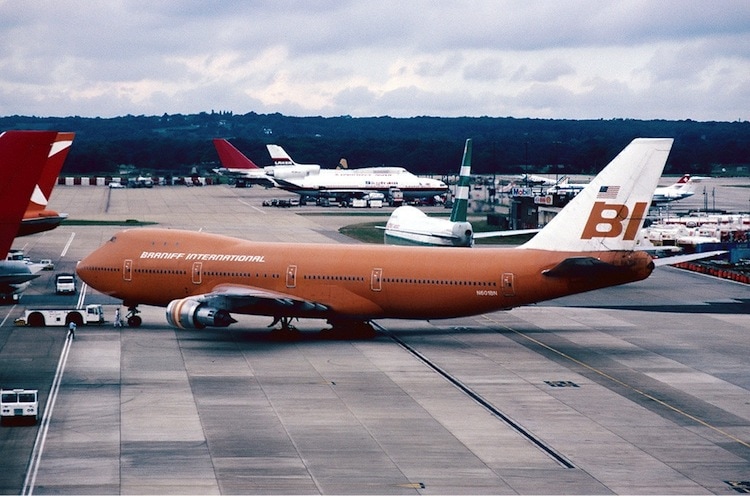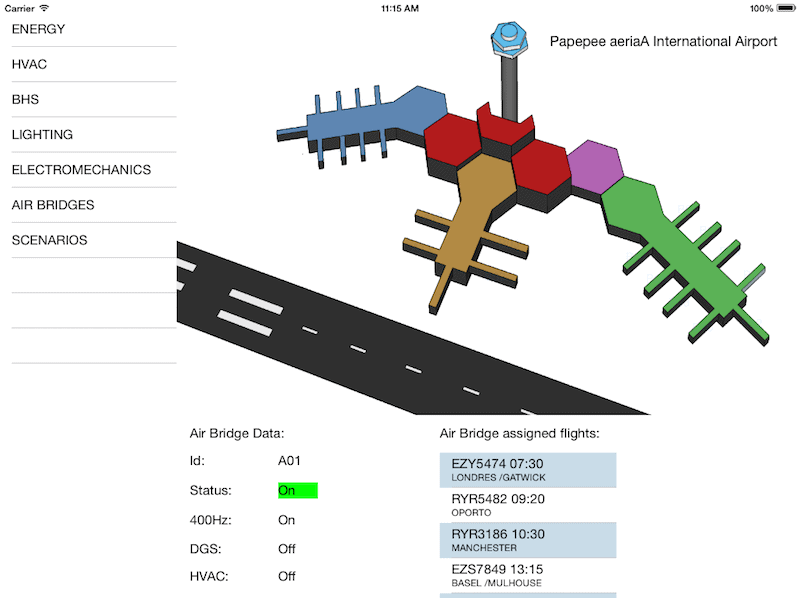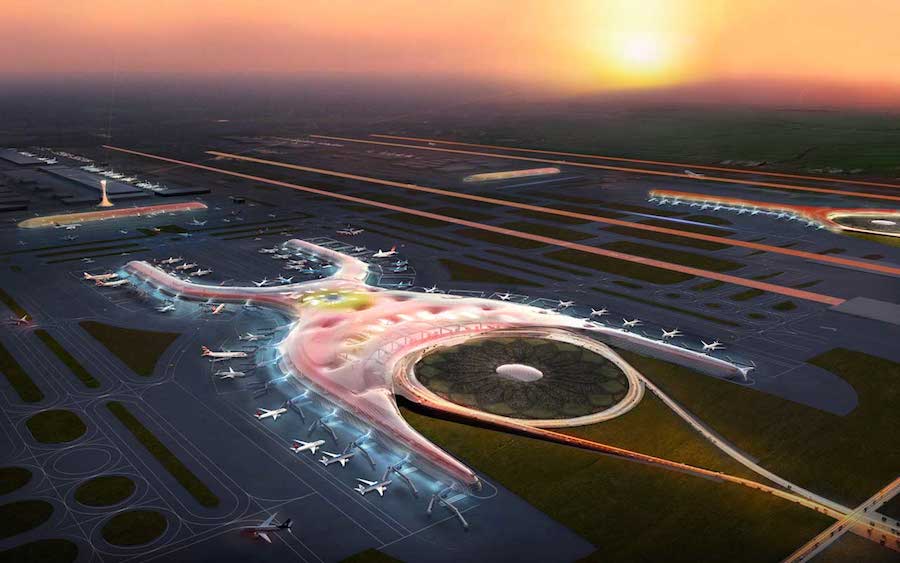I have the pleasure to show you the AIrTalk with Mark Sapp, SVP Business Development at AirIT, a Fraport Company, one of the airport’s leading technology firms. I met Mark at LinkedIn and we started to cross comments, opinions in the different group’s debates. One day I asked Mark about doing an interview and he kindly accept it, at aeriaA I wanted to know more of one of the most recognized airport’s technology companies, AirIT. aeriaA is an aviation and its technology place, so it is mandatory to have the big players on stage (you might know there is a big space for the mid and small players too, visit the Project’s menu above). So, it’s time for introducing our guest, I’ve stolen his own profile’s presentation.
Mark Sapp has been in and around commercial aviation his entire life. The son of an airline A&P mechanic, he began his own professional career on the air carrier side in 1972 including a combined 15 years with Eastern, Braniff International and Midway. With the dawning realization that airlines might not be the best bet for long term career stability, he moved into the travel and transportation industry information technology sector in 1987.
Working with both airports and airlines, Mark’s IT resume includes experience gained with RPA, Sabre Decision Technologies, IBM Global Services, SITA and Air-Transport IT Services. Mark joined AirIT in early 2003 as National Sales Director and currently serves as the company’s SVP Business Development.
Mark is a frequent industry speaker and moderator, currently serves as a member of AAAE’s Corporate Committee steering group as well as a member of all six AAAE regional chapters. Remaining a life-long student of the industry he calls home, Mark’s professional passion is helping airports leverage technology to reduce costs, optimize cash flow and improve operational efficiencies.
[aeriaA]Tell us about AirIT, how is your company? What is the future vision of the airport’s systems?
[Mark Sapp] AirIT is an information technology firm based in Orlando, FL. The company’s comprehensive portfolio of solutions enable airports and airlines to better utilize and manage resources, enhance the passenger experience, reduce costs, and optimize revenue generation. Our airport operational, passenger processing, and revenue management platforms deliver enterprise-class business intelligence solutions and are the most innovative in the air transport marketplace. AirIT solutions are operational in 30 of the top 50 airports in North America and are at home in another 100 airports worldwide. For more information, please visit: www.AirIT.com
[aeriaA] In your opinion,for the next 5 years what are the most promising technologies applied in airports?
[Mark Sapp] Good question. Perhaps the most promising technological advances for airports in the next 5 years will likely result from Big Data-driven analytics. Airport Intelligence, mined from a myriad of available data stores on a near-realtime basis, will provide airport management holistic and actionable information by which they can more effectively contain costs, mitigate risks and optimize revenues in manners previously thought beyond reach. AirIT is taking important early steps to be well positioned as the market-sector leader in this space; for amplification of my perspective on this, please visit: www.airit.com/intelligent.cfm

Holistic airport’s events approach Infographic by aeriaA See the Airport’s Dashboard Project series. www.aeriaa.com/aeriaas-airport-dashboard-project
[aeriaA’s note] Let me make a joke with the genius of Dilbert.
[aeriaA] You have recently been appointed as the corporate member of the year at the Southeast Chapter of the AAAE (The American Association of Airport Executives) . What does this mean to you?
[Mark Sapp] Two words come to mind: Appreciation and gratification. I deeply appreciate this recognition for my level of engagement by the airport management community in the Southeastern region. It’s quite gratifying to be afforded an opportunity to contribute to their educational endeavors.
[aeriaA] Please, tell us what is AAAE and what are the implications of their actions or issues discussed in the airport world.
[Mark Sapp] The American Association of Airport Executives (AAAE) was founded in September 1928 when 10 airport directors met at the National Air Races at Mines Field (now Los Angeles International Airport). In 1954, the association formally adopted a professional standards accreditation program. Since that time, no one has been awarded Accredited Airport Executive (A.A.E.) status without meeting the requirements established by the Board of Directors. That same year, AAAE’s annual conference, held each year since its founding, expanded to include exhibitors of airport services, products and equipment.
AAAE’s nearly 5,000 individual members includes some 3,000 airport professionals representing nearly 850 different airports, from large hubs to general aviation facilities. The association’s 600 corporate members are dedicated to serving airports and the aviation industry, and provide critical support to the association through their participation in meetings and workshops. Since its inception in 1928, AAAE has continued to move forward and grow, not only in size but in expertise.
[aeriaA] What are the AAAE future plans and goals?
[Mark Sapp] AAAE has succeeded over the years, creating a suite of products and services that address airport industry needs, and generate the revenue required to support core association services, such as the Airport Legislative Alliance, Regulatory Affairs, and the Transportation Security Policy departments. Products like the patented, computer-based Interactive Employee Training (IET) demonstrate both AAAE’s commitment to providing the airport community with cost-effective tools and its ability to create a successful business model that does not lean heavily on membership dues.
Since its inception in 1928, AAAE has continued to move forward and grow, not only in size but in expertise. AAAE delivers results-oriented representation in Washington, D.C. and offers a wide range of cost-effective industry services and professional development opportunities for airport executives worldwide.
[aeriaA] From your experience, what region of the world is more determined to apply and invest in new technologies at airports?
[Mark Sapp] I’m unsure whether any specific geography can make a legitimate claim to having the best record here. Geopolitical, economic and regulatory realities should be factored into any evaluation of which region consistently demonstrates greater determination to invest and apply new technologies at airports around the world. While the Austral-Asia, North American and Western Europe regions have frequently been early adopters in this area, it’s hard to not give due credit to what we’re seeing (relative to new technologies) at airports in many other areas of the world including – but not limited to – China, the Middle East, etc.
[aeriaA] From an AirIT point of view, what are the new IT requirements your customers (airports/airlines) demand?
[Mark Sapp] Desktop virtualization (we use VMWare’s VDI) for shared (not common) use passenger processing: As airlines seek to provide brand differentiation for unimpaired delivery of their full customer service experience, consistent with what those customers experience at airports where the carriers have deployed their respective proprietary passenger processing systems, we’re seeing an increasing demand for ‘new-approach’ IT solutions that enable rather than inhibit functionality. Airport-provided hardware, connected via secure non-routed Layer 2 or Layer 3 VLAN infrastructure, enables agent-to-host native systems session invocations using desktop virtualization; dynamic backwall signage integrated, with each airline’s applications suite, deliver the carrier’s Full Monty…with nothing Lost in Translation.
[aeriaA] Where is the balance between the strategies of systems outsourcing with a PaaS, SaaS, etc and the deployment of them in the airports as usual?
[Mark Sapp] Equilibrium here will likely to prove difficult. A portion of my response to the previous question (i.e. – Geopolitical, economic and regulatory realities should be factored into any evaluation…) are doubtless factors requiring specific instance clarity before chancing a broad-brush answer. That said, my sense is that the vast majority of real-time, decision-support, mission-critical airport systems are not (at least yet) strong candidates for offsite deployment.
[aeriaA] What new challenges do the IT providers have for housing the airport’s systems?
[Mark Sapp] Unimpaired services delivery, risk mitigation and cost containment are equally huge concerns.
[aeriaA] Does this new “cloud-scenario” complicate the SLA management with customers?
[Mark Sapp] Without a doubt: Prime examples include PCI DSS certification compliance and transactional millisecond synchronization just to name a couple.
[aeriaA]The widespread adoption of standard systems at all airports, as the AODB, RMS, FIDS, CUSS, BHS, etc. and their SOA/ESB based integrations is beginning to be a mature market. However, we are seeing the need to open the core systems’ information to others as airlines, parking providers, shops, hotels, transportation systems (bus, metro, train…), mobile applications…
[Mark Sapp] I’ll need to take exception to your “widespread of standard systems at all airports” framing of this one, Pedro (aeriaA’s editor). Again, I’m speaking primarily from my experience in the North American airports market segment here, but the list of systems you’ve called out are not as widespread as one might assume. Islands of automation – amid oceans of integration disparity lacking a single-schema AODB/RMS foundation (much less SOA/ESB connectivity around same) – tend to be frequent flyers; much still remains to be done in this geography. I guess the direction I’m taking here is to repeat a portion of one of my previous responses: Airport Intelligence, mined from a myriad of available data stores on a near-realtime basis, will provide airport management holistic and actionable information by which they can more effectively contain costs, mitigate risks and optimize revenues in manners previously thought beyond reach.
[aeriaA] With not standardized services and information models, are we creating a new risk for new effect spaghetti of connections between suppliers and the airport’s internal systems?
[Mark Sapp] Yes, without a doubt.
[aeriaA] Don’t you think the industry should work together to set new standards for these new services?
[Mark Sapp] Yes, without a doubt.
[aeriaA] For instance, the ACI ACRIS is trying to facilitate the creation of services and their evolution.
[Mark Sapp] Agreed; the logical and sequential A-CDM objectives ACRIS looks to address are, in my opinion, both important and necessary. However (and again going back to a previous observation that I have already offered in relation to a couple of your questions), geopolitical, economic and regulatory realities should be factored into how ACRIS can become a formative standard.
[aeriaA] Finally, I don´t only want to speak about the industry, tell us about you. How were your beginnings in the aviation industry?
[Mark Sapp] I’ve has been in and around commercial aviation my entire life. The son of an airline A&P mechanic, I began my professional career on the air carrier side in 1972 (including a combined 15 years with Eastern, Braniff International and Midway). With the dawning realization that ‘departing airlines’ might not be my best bet for long term career stability, I moved into the transportation-industry information technology sector in 1987.
Working with both airports and airlines, my IT resume includes RPA, Sabre Decision Technologies, IBM Global Services, SITA and Air-Transport IT Services (AirIT). I joined AirIT in early 2003 as National Sales Director and currently serve in the capacity of SVP Business Development.
[aeriaA] You have a long experience at airlines and airports as IT provider and worker. In which areas do/did you feel more fulfilled?
[Mark Sapp] I am a life-long student of the industry I’m fortunate to call home. My professional passion is helping airports and airlines leverage contemporary technology to reduce costs, optimize cash flow and improve operational efficiencies.
[aeriaA] What are your best projects that made the difference in your career or personally?
[Mark Sapp] A couple come to mind:
The first was during my time with Midway Airlines in the early 80s where I served as Director of Reservations & Telecommunications. When I joined ML early on our res center was in the original MDW South Terminal (circa 1929); the building has tons of history, but dearly lacked the space and modernity needed to support our needs. Our rapid growth in those early days necessitated a move of the corporate offices across Cicero Avenue to what had been, at one time, UA’s headquarters. The new res center project afforded me an opportunity to engage in the design, selection and build out processes for everything from a powerful ACD to the agent workstations, to the cubicles and furniture. We were able to fast track the project and, happily, we completed the build out and cutover on time and within budget.
The second is much more recent. Two years ago AirIT had an opportunity to replace a traditional common use passenger processing system with our EASE™ share use infrastructure platform in Alaska. ANC and FAI experience extreme seasonality and, with relatively short notice, our challenge was to engage and coordinate the system change with the airlines serving these two airports. Today, following two peak seasons, we are able to look back upon the vastly improved levels of customer (both airport & airline) customer satisfaction this project has generated and begin the planning phase for expanding ‘any airline, any position’ scope at both locations for 2014. Beyond ANC and FAI, though, the successful vibe generated by our continuing engagement with the State of Alaska’s Department of Aviation – Airports Division has resonated well and are serving our strategic market penetration and retention goals nicely.
[aeriaA] I would like to know more about your Braniff experience and livings, tell us your best memories about that time, and tell us for the people that did not live those years what Braniff was in aviation history.
[Mark Sapp] My first recollection of air travel as a young child was a late night BN flight aboard a DC-7C. My father was an A&P mechanic and, riding pass, I still vividly recall watching the trailing exhaust flame from the two starboard engines – I was mesmerized, I was hooked! I had the opportunity to join BN (from EA) as Braniff was ramping up staff to move from Dallas Love Field to the new DFW Airport. Some of my best memories from the 70s there include the hoopla associated introduction of Alexander Calder specialty livery on both a DC-8 and, later, a 727-200; I also fondly recall my only Concorde ride, although sub-sonic, between DFW-IAD on the BN-AF interchange service. BN’s rapid pre-deregulation new market growth we experienced in the late 70s, coupled with exorbitant fuel costs brought upon by the first oil embargo and our lack of fifth-freedom traffic rights in Asia-Pacific, spelled what I later came to see as the Perfect Storm that ended our 50+ year run. While some of these later memories are poignant at best, I would not trade any of them; I’ll always carry a soft spot in my heart…and perhaps in my head as well…for my days and my fellow colleagues at Braniff International Airways!
[aeriaA] Thanks so much Mark.
For more info:
AirIT. www.airit.com
AAAE. www.aaae.org
Fraport group: www.fraport.com/content/fraport/en/the-fraport-group.html
Braniff.
en.wikipedia.org/wiki/Braniff_International_Airways
ACRIS.
www.aci-na.org/sites/default/files/arturo_garcia-alonso.pdf
www.aeriaa.com/on-the-new-airports-digital-level-acris/

